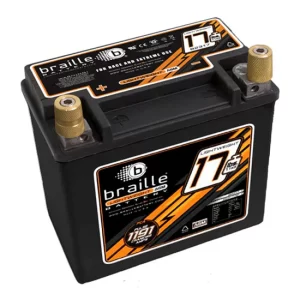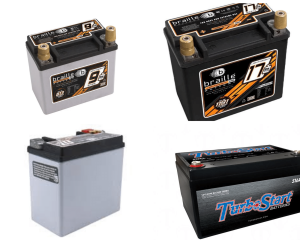Learn about lightweight AGM batteries, their advantages, technology developments, maintenance tips, and applications in this comprehensive guide. Perfect for all your lightweight AGM battery needs!Are you tired of lugging around heavy, bulky batteries for your energy storage needs? Look no further than the lightweight AGM battery. In this blog post, we will explore the ins and outs of this revolutionary technology, from its definition and advantages to recent developments and maintenance tips. We will also delve into the various applications for lightweight AGM batteries, helping you understand how this innovation can benefit you in your daily life.
As the demand for portable power solutions continues to grow, the lightweight AGM battery has emerged as a game-changer in the energy storage industry. Whether you’re a weekend warrior in need of reliable power for your outdoor excursions or a business owner seeking efficient energy storage solutions, the lightweight AGM battery offers unmatched versatility and performance. Join us as we uncover the endless possibilities that come with embracing this cutting-edge technology.

What is a lightweight AGM battery?
A lightweight AGM (Absorbent Glass Mat) battery is a type of lead-acid battery that is specifically designed to be lighter in weight than traditional AGM batteries. The technology behind lightweight AGM batteries involves using advanced materials and construction techniques to reduce the overall weight of the battery while still maintaining high performance and durability.
One key feature of lightweight AGM batteries is the use of thinner and lighter plates, which allows for a higher energy density and a lower overall weight. This makes them ideal for applications where weight is a critical factor, such as in automotive racing, marine, and motorcycle applications.
Furthermore, lightweight AGM batteries are sealed and maintenance-free, making them a convenient and reliable power source for a wide range of uses. They are also designed to have a low internal resistance, which allows for quick and efficient energy transfer, and they can be installed in various orientations without risk of acid leakage.

Advantages of lightweight AGM battery
When it comes to choosing a battery for your vehicle or marine equipment, there are many options available on the market. One type of battery that has been gaining popularity in recent years is the lightweight AGM (Absorbent Glass Mat) battery. These batteries offer a number of advantages over traditional lead-acid batteries, making them an attractive option for many consumers.
One of the main advantages of a lightweight AGM battery is its durability. These batteries are designed to withstand tough conditions, making them ideal for use in off-road vehicles, boats, and other applications where the battery may be subjected to shock and vibration. The construction of the AGM battery, with its sealed design and use of glass mat separators, also helps to prevent acid leaks and corrosion, extending the battery’s lifespan.
Another advantage of lightweight AGM batteries is their low maintenance requirements. Unlike traditional lead-acid batteries, AGM batteries do not require regular watering or electrolyte checks, making them a convenient choice for those who want a hassle-free battery option. Additionally, AGM batteries have a slow self-discharge rate, allowing them to hold their charge for longer periods of time without needing to be recharged frequently.
| Advantages of lightweight AGM battery |
|---|
| • Durability |
| • Low maintenance |
| • Long shelf life |
Developments in lightweight AGM technology
Lightweight AGM (Absorbent Glass Mat) batteries have seen significant advancements in technology in recent years. One of the key developments is the use of advanced materials in the construction of these batteries. Manufacturers are now using high-performance materials that offer improved efficiency and durability, making lightweight AGM batteries a reliable choice for a wide range of applications.
Another important development in the technology of lightweight AGM batteries is the enhanced charging capabilities. Modern lightweight AGM batteries are designed to accept faster and more frequent charging, making them ideal for high-demand situations. This development has expanded the range of potential applications for lightweight AGM batteries, from automotive to renewable energy storage.
Additionally, advancements in lightweight AGM technology have focused on safety features. Manufacturers have introduced innovative designs and technologies to ensure that lightweight AGM batteries are more resistant to overcharging, over-discharging, and short-circuiting, providing a safer and more reliable power source.
How to maintain a lightweight AGM battery
When it comes to maintaining a lightweight AGM battery, there are a few key things to keep in mind in order to ensure its longevity and optimal performance. One of the most important aspects of maintenance is to regularly check the battery for any signs of damage or wear. This includes inspecting the terminals for corrosion, as well as checking the overall condition of the casing and insulation.
Additionally, it’s crucial to keep the battery charged at the proper voltage to prevent sulfation, which can occur when a battery is left in a discharged state for an extended period of time. This can significantly decrease the lifespan of the battery and negatively impact its performance. Regularly charging the battery using a compatible charger is essential for preventing sulfation and ensuring the battery remains in good condition.
Another important aspect of maintaining a lightweight AGM battery is to avoid overcharging or undercharging. Overcharging can lead to excessive heat generation and potential damage to the battery, while undercharging can result in a reduced capacity and performance. It’s important to follow the manufacturer’s guidelines for charging the battery and to use a suitable charger to prevent any issues.
Applications for lightweight AGM batteries
Applications for lightweight AGM batteries
Lightweight AGM batteries are becoming increasingly popular due to their numerous advantages, such as their compact size, low maintenance requirements, and ability to deliver high cranking power. These batteries are finding wide applications across various industries and settings, making them a versatile and reliable power source.
One of the key applications for lightweight AGM batteries is in the automotive industry. These batteries are commonly used in modern vehicles, including cars, motorcycles, and recreational vehicles, due to their ability to provide reliable starting power and long service life. Additionally, their lightweight design makes them an ideal choice for use in racing and performance vehicles, where every pound of weight savings can make a significant difference in overall performance.
Another important application for lightweight AGM batteries is in the renewable energy sector. These batteries are commonly used in off-grid solar power systems and wind turbines, where they serve as a reliable energy storage solution. Their high cycling capability and maintenance-free operation make them an attractive choice for remote and environmentally sensitive installations.
| Applications | Advantages |
|---|---|
| Automotive | Reliable starting power and long service life |
| Renewable Energy | High cycling capability and maintenance-free operation |
- Automotive industry
- Renewable energy sector
It is clear to see that the applications of lightweight AGM batteries are diverse and far-reaching. As technology continues to advance, we can expect to see even more innovative uses for these powerful and versatile energy storage solutions.
Frequently Asked Questions
What is a lightweight AGM battery?
A lightweight AGM (Absorbent Glass Mat) battery is a type of lead-acid battery that uses a glass mat separator to absorb and retain the electrolyte solution, making it spill-proof and maintenance-free.
What are the advantages of a lightweight AGM battery?
Some advantages of a lightweight AGM battery include high resistance to vibrations, fast recharging, longer lifespan, and the ability to be mounted in various positions without spilling.
How does a lightweight AGM battery differ from a traditional lead-acid battery?
Unlike traditional lead-acid batteries, lightweight AGM batteries do not require regular maintenance, are sealed and spill-proof, and have a lower self-discharge rate.
Where are lightweight AGM batteries commonly used?
Lightweight AGM batteries are commonly used in motorcycles, ATVs, boats, and RVs, as well as in solar power storage and backup power applications.
Can a lightweight AGM battery be charged with a standard charger?
Yes, a lightweight AGM battery can be charged with a standard lead-acid battery charger, but it’s important to use a charger that is compatible with AGM batteries to ensure proper charging.
Are lightweight AGM batteries safe to use in any position?
Yes, lightweight AGM batteries are safe to use in any position, including sideways or upside down, without the risk of acid leakage or spills.
What should I consider when purchasing a lightweight AGM battery?
When purchasing a lightweight AGM battery, consider the required voltage and amperage, the physical dimensions to ensure it fits your application, and any specific requirements for mounting or maintenance.
